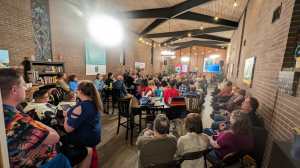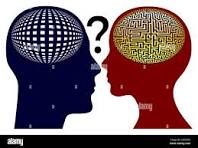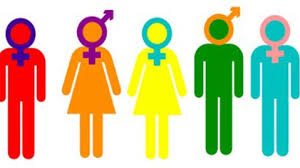I speak frequently about the call onto the Hero’s Journey, common to every age, language, ethnicity, and people group. An ordinary citizen is called onto an extraordinary journey onto the road of trials. Initially they reject the call because, hey, it’s the road of trials. But now you are miserable because you know you’ve been called and you’ve rejected the call. A spiritual guide comes into your life and gives you the courage to answer the call onto the Hero’s Journey, and sure enough, you’re on the road of trials. Then things get worse and you find yourself completely lost in a deep, dark cave.
This is when you can be quite sure it is in fact your call, because as David Whyte says in Consolations, “A true vocation calls us out beyond ourselves; breaks our heart in the process and then humbles, simplifies and enlightens us about the hidden core nature of the work in the first place.”
It was a given from an early age that I would go into ministry, the family business. I would attend the college at which my uncle was the president and my father was on the board of directors. Then I would serve a church of my denomination, as my father had done. I had other ideas. I was a radio announcer and had dreams of being a television anchor, but those dreams did not stir deeply enough within to change my course heading. The compass heading was hard-wired, generational. My father’s mother, gone before I was born, was a severe woman with a superego of stone, capable of setting a compass, even from the grave.
I did rebel in my own way, I suppose. Though I proved to be a pretty capable preacher, I refused to preach and sang instead, forming my own bands that made five albums before throwing in the towel to the demands of fatherhood and financial stability. Still, I never pastored a local church until 2018. I directed a large religious non-profit, chaired the board of a television network, served as the editor-at-large of a religious magazine, served on the preaching team of a couple of megachurches, but I resisted being a local church pastor.
Nevertheless, I did discover rather quickly that ministry, broadly defined, was in my genes. By my junior year of college I was asking the kinds of theological questions that annoyed the conservative professors and invited private meetings with the younger ones. Encouraging my inquisitive spiritually-curious mind, they pointed me in the direction of a mentor who taught philosophy at an eastern university. My family doctor introduced me to my other mentor, a retired Roman Catholic seminary rector with a couple of PhDs and the bright eyes of wisdom.
Over a quarter of a century they both guided my journey, passing on just a couple of years apart, leaving me the mentor who brought inquisitive young minds into my office to recommend books not suggested at evangelical seminaries.
Even as a child I questioned the traditional notion of heaven. In my twenties I read Evidence that Demands a Verdict and found it did not demand a verdict. I read Hans Küng’s, Does God Exist? and found that on the final page the question mark remained. I found insight in Francis Schaeffer’s, He Is There and He Is Not Silent, but the older I became, the more I suspected he is awfully silent.
Ministry, broadly defined, broke my heart. Once I became a local pastor I found that ministry narrowly defined also broke my heart. The local church is a messy affair, sure to bring you to your knees and make you wish you had decided to deliver the US mail instead of become a pastor. And yet there was Stonehenge, the Pyramids, the carved bodies of Rapa Nui, and all the other evidence that shows we have always preferred working out the meaning of life in community, and is it really such a bad thing to dedicate one’s working life to such an endeavor?
Today I am still pulled to my calling and the complex, mysterious, and ever expanding nature of its hold on me, not unlike the Big Bang, growing larger, closer and paradoxically more distant and miraculous with the passing of time.
Do I still consider myself a Christian? Yes, I do. I continue to be endlessly fascinated with the teachings of Jesus, though the notion of his bodily resurrection is of little fascination to me.
As Whyte writes, I have come to find that I did have what I needed from the beginning, an intelligent curiosity, an openness to mystery, and a confident conviction of the divine nature of Love, which does win, you know.
With that knowledge, my calling continues, wiser, softer, more encompassing, whether staring at the Fairy Pools of Skye or the Old Man of Storr, I see the water and rocks cry out at the wonder of it all and I know this calling was mine all along. I came to it kicking and screaming as a young person. Nowadays I rest in it, humble and curious as ever.
And so it goes.










